In the vast world of precision manufacturing, machining plays a vital role in the shaping and cutting of complex parts. As technology continues to advance, more efficient machining methods are being developed to achieve amazing precision and superior versatility, with 5-axis, 3+2-axis and 4+1-axis configurations being widely used in the industry. But how do you choose the best option for your machining needs? The next section will introduce the differences between the three machining methods so that you can make a better choice:
1.Definition and Motion Mode
| 5 axis machining center | |
| 5-axis machining refers to the addition of two rotary axes (two of the A, B, and C axes) to the three linear axes (X, Y, and Z). These two rotary axes enable the relative motion of the tool and the workpiece at different angles, enabling the tool to approach the workpiece at any angle for cutting.
For example, when machining complex curved parts, 5-axis machining can improve machining efficiency and surface quality by controlling the motion of all five axes simultaneously so that the tool always maintains the optimum cutting angle. |
|
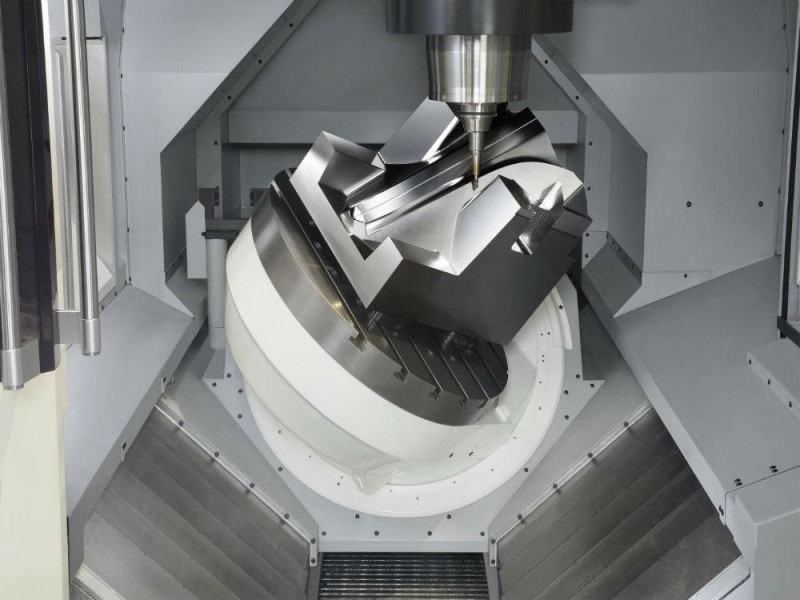 |
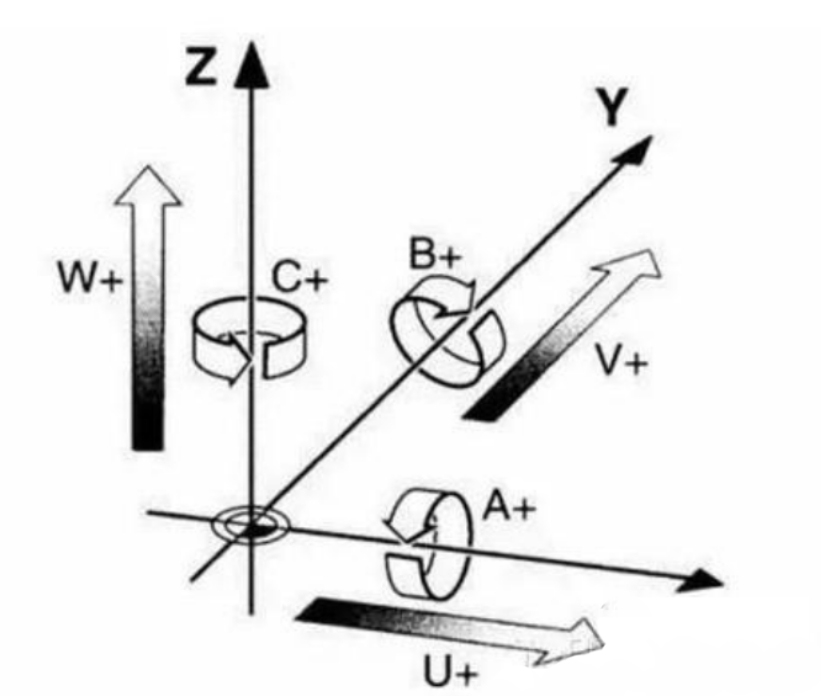 |
| 3+2 axis machining center | |
| 3+2 machining is also known as positioning 5-axis machining. It involves positioning the tool to a specific position by three linear axes (X, Y, Z) and then rotating the workpiece to a specific angle by two rotary axes (usually A and C) for machining.
This type of machining is not true 5-axis simultaneous machining, but rather separate positioning and rotary operations at different machining positions to achieve complex shapes. |
|
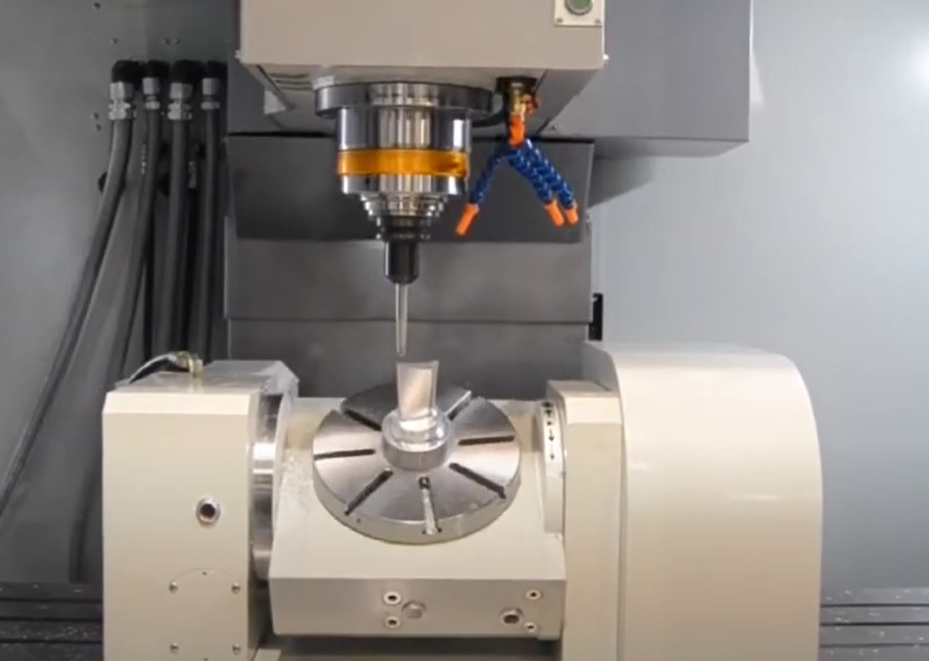 |
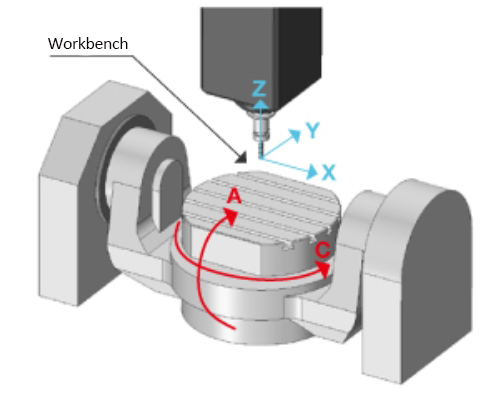 |
| 4+1axis machining center | |
| 4+1 machining is the addition of a fixed angle to the four linear axes (X, Y, Z and a rotary axis, usually the A or B axis). This fixed angle can be achieved by special design of the fixture or workpiece.
For example, when machining parts with specific angular requirements, the workpiece can be machined by fixing it at a specific angle and then using the four linear axes. |
|
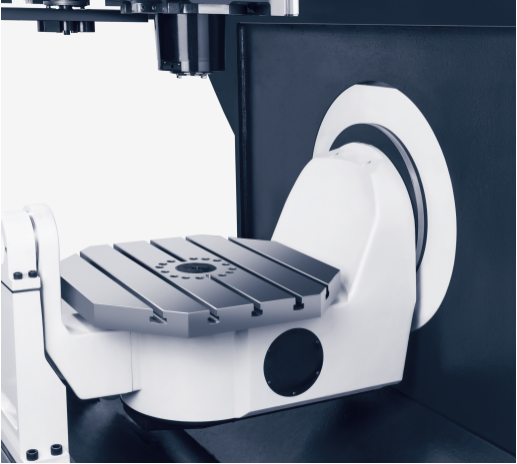 |
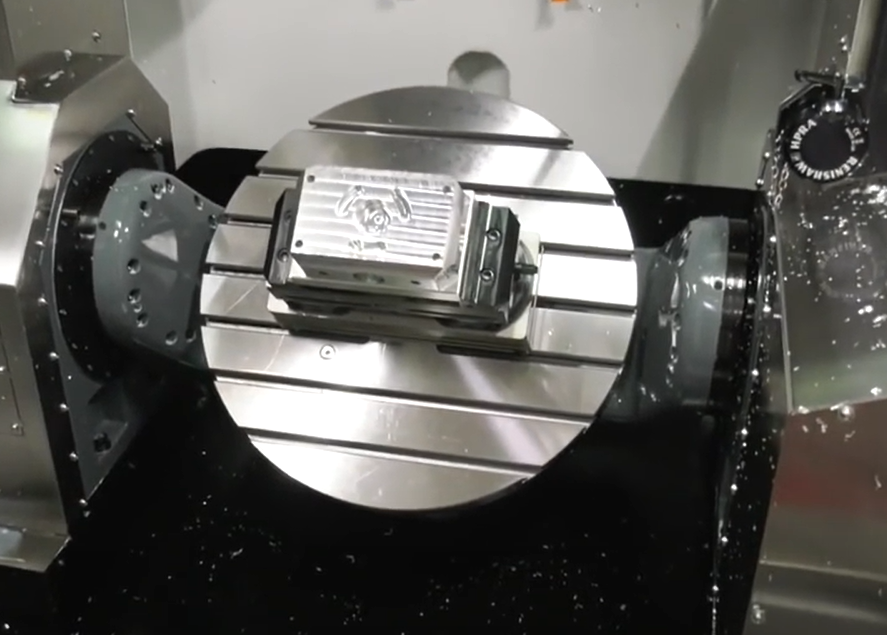 |
2.Machining capabilities and application scenarios
5-axis machining center:
Machining capability: It can achieve high-precision machining of complex surfaces, such as aerospace parts and automotive moulds. It can complete the machining of multiple surfaces in one clamping, reducing the number of clamping times and improving the machining accuracy and efficiency.
Application Scenario: Suitable for machining parts with complex shapes and high precision requirements, such as impellers, blades and complex moulds. Able to process parts with high quality surface and precise size.
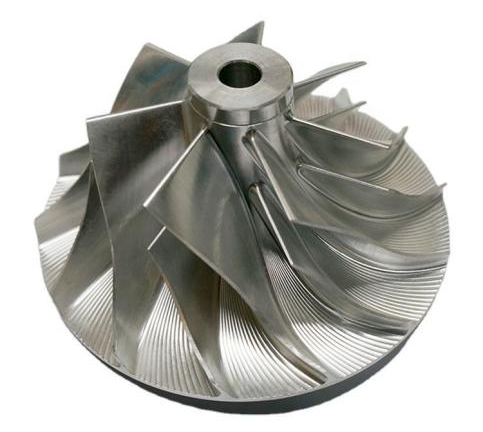
3+2 Machining center:
Machining ability: It can achieve a certain degree of complex shape machining, but its machining ability is limited compared with the real 5-axis machining. Mainly used for machining parts with specific angular requirements, or in cases where true 5-axis machining is not possible.
Application Scenario: Suitable for machining parts that require specific angle machining, such as slanted holes, slanted surfaces and so on. 3+2 machining is also possible on some small machining centres to increase the machining capacity.
4+1 machining center:
Machining capacity: relatively simple, mainly used for processing some parts with specific angle requirements. Since there is only one rotary axis and one fixed angle, its machining capacity is not as good as 5-axis machining and 3+2 machining.
Application Scenario: Suitable for machining some simple parts with specific angle requirements, such as some small parts with specific angle machining. 4+1 machining can also be realised on some low-cost machining equipment.
3.Programming and Operation Difficulty
5-axis machining center:
Programming Difficulty: The programming of 5-axis machining is relatively complex and requires mastery of 5-axis programming techniques and methods. It is necessary to consider the planning of tool paths, avoiding interference between the tool and the workpiece, and controlling the motion of rotary axes.
Difficulty: Operating 5-Axis machining equipment requires a high level of skill and experience. Operators need to be familiar with the machine’s operator interface, control system and programming methods, and be able to accurately control the motion of the five axes.
3+2 Machining center:
Programming Difficulty: 3+2 machining is relatively easy to program because it is not true 5-axis simultaneous machining. Programming is mainly concerned with the positioning of the three linear axes and the angular setting of the two rotary axes.
Operating Difficulty: Operating the 3+2 machining equipment is relatively easy, but it does require a certain level of skill and experience. The operator needs to be familiar with the machine’s operating interface and control system, and be able to accurately perform positioning and rotary operations.
4+1 Machining center:
Programming Difficulty: 4+1 machining is relatively easy to program, similar to 3-axis machining plus a fixed angle setting. Programming requires consideration of the four linear axes of motion and the fixed angle setting.
Operating Difficulty: Operating 4+1 machining equipment is relatively easy, and for some operators with some experience in 3-axis machining, it is relatively easy to get started.
In conclusion, there are some differences between 5-axis machining, 3+2 machining and 4+1 machining in terms of motion, machining capability, application scenarios, programming and operating difficulty. When choosing the machining mode, you need to consider the specific part requirements, machining equipment and technology level and other factors.
Learn more about CNC machining machine tools, please check: milling-machining-centre


